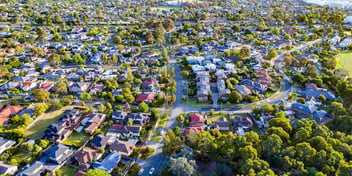Water analytics data helping the rise of smart utilities, says Ozwater speaker

As water utilities around the world work towards leveraging data to optimise and improve operations and asset management, one leading expert says becoming a smart utility is becoming increasingly viable thanks to new approaches to data analysis.
Stantec Senior Process Engineer Ari Shammay, who will speak at Ozwater'22 on global applications of Internet of Things (IoT) technology in the water industry, said that the move towards data warehousing in the water sector is allowing for a more targeted and cost-effective use of data.
The benefits of data warehousing for water utilities
“Being a smart utility used to be about integrating different systems — for instance, getting finance systems to talk to billing systems, and getting SCADA systems to talk to all systems — and it’s been quite an expensive thing to do,” he said.
“Over the past five years, the water utility landscape has started moving into data warehousing. Regardless of the different systems that a water utility may have in place, those systems can provide a data feed to one big data warehouse.
“Having a data warehouse provides considerable benefits; it allows us to tap into data, run lots of different algorithms, and then display the information or processes required for different types of users.”
Shammay said with new approaches to data management and use coming to the fore, being a smart water utility no longer requires the same type of huge investments in IT systems.
“A lot of IT systems are now able to push data into a data warehouse, making a whole range of approaches to data analytics far more accessible,” he said.
“This is good news for smaller utilities, or regional and remote players, as it allows for them to benefit from a smart utility approach. There are opportunities to use existing systems and, as time and money permit, supplement with IoT systems afterward.”
Water analytics are allowing utilities to go digital
Shammay said data is integral to Stantec’s approach across sectors, but that the company is also part of research works aimed at helping water utilities go digital.
“We have been doing a lot across the globe in data analytics. Our data team sits across the whole business, so we do asset management data work, including asset condition assessments and work within the architectural space,” he said.
“We are also part of the Water Research Foundation (WRF) Project 5039, which is about looking at the definition of a smart utility, how utilities can become digital and the framework for intelligent water systems.
“We are also working with the Water Environment Foundation (WEF) and WRF to develop a utility analysis and improvement methodology.”
Showcasing water asset management success at Ozwater
In order to illustrate some of the opportunities available in terms of IoT application within the water sector, Shammay’s Ozwater’22 presentation will be discussing three international case studies, including works Stantec has completed in Taiwan, the UK and the USA.
“In Taoyuan City, the water authority has integrated their geophysical information systems [GIS] with augmented reality [AR] and IoT. These three technologies are linked into one big cloud management system,” he said.
“This allows operators to go out into the field with their phone or device and access real time data from sensors overlaid onto an image of the area. They can also use their cameras to overlay GIS information onto what they are actually seeing in the field.
“This approach has a lot of applications, but it really helps with routine maintenance and improving efficiency, optimisation, and troubleshooting.”
Stantec has also worked closely with the City of Atlanta’s Department of Watershed Management, which provides water for about 1.2 million people per day.
“We integrated information and operational technology systems, and, in particular, utilised sensors throughout their network to identify and, importantly, forecast their wastewater spill rates and locations to better direct maintenance and prevent spills,” Shammay said.
“It links in with GIS systems and we provided dashboarding to find out where all the spills were, whether there were repeat spills and the cumulative totals of spills.”
Shammay will also be discussing the work Stantec has been doing with Thames Water in the UK as part of the eight2O (E2O) Alliance, which brings together global expertise from multiple sectors to create innovative and sustainable solutions.
“Thames Water was really one of the first major utilities to adopt a smart utility approach. Since 2015, we have been working with them to build a smart utility ethos into the works that have been going on as part of the E2O alliance,” he said.
“The work we’ve been doing with Thames Water has involved deploying over 1400 sensors and leading all their data into their water analytics platform.
“It helps with real-time dashboarding; it allows users to respond to changing operational conditions, like demand fluctuation and weather fronts; and to be able to do that all remotely.
“The project has led to an intelligence hub platform, and has enabled an estimated $80 million in expenditure benefits over a five year period, which has been delivered to one third of the Thames Water asset base.”
Interested in learning more about the latest innovation in the water sector? Register for Ozwater’22 here.


